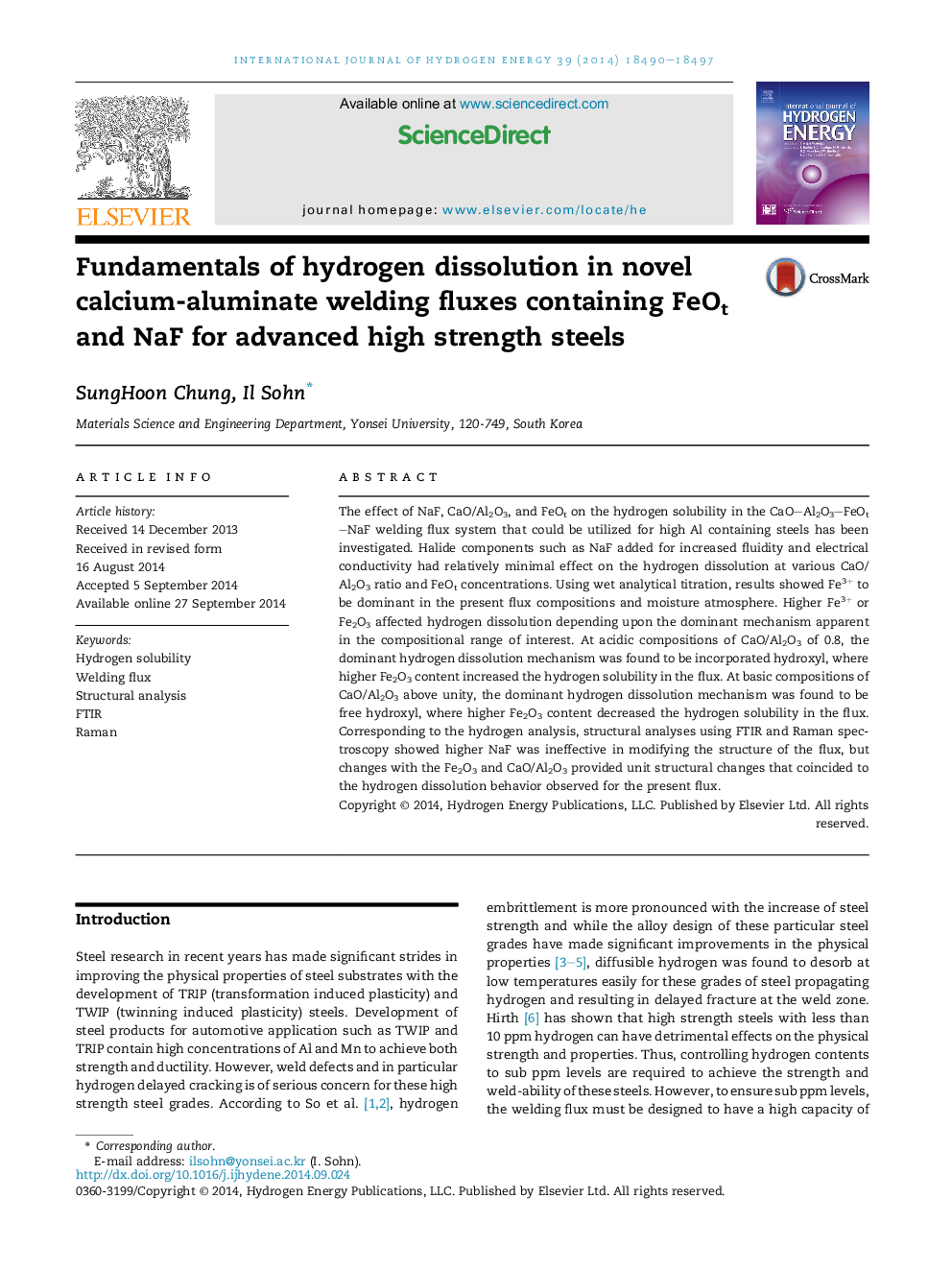| Article ID | Journal | Published Year | Pages | File Type |
|---|---|---|---|---|
| 1280859 | International Journal of Hydrogen Energy | 2014 | 8 Pages |
•At low CaO/Al2O3, hydrogen in the oxide flux existed as an incorporated hydroxyl.•At high CaO/Al2O3, hydrogen in the oxide flux existed as a free hydroxyl.•Fe2O3 is dominant in the CaO–Al2O3–FeOt–NaF system, polymerizing the flux structure.•Hydrogen solubility was correlated with the flux structure.•NaF had relatively little effect on the hydrogen content in the flux.
The effect of NaF, CaO/Al2O3, and FeOt on the hydrogen solubility in the CaO–Al2O3–FeOt–NaF welding flux system that could be utilized for high Al containing steels has been investigated. Halide components such as NaF added for increased fluidity and electrical conductivity had relatively minimal effect on the hydrogen dissolution at various CaO/Al2O3 ratio and FeOt concentrations. Using wet analytical titration, results showed Fe3+ to be dominant in the present flux compositions and moisture atmosphere. Higher Fe3+ or Fe2O3 affected hydrogen dissolution depending upon the dominant mechanism apparent in the compositional range of interest. At acidic compositions of CaO/Al2O3 of 0.8, the dominant hydrogen dissolution mechanism was found to be incorporated hydroxyl, where higher Fe2O3 content increased the hydrogen solubility in the flux. At basic compositions of CaO/Al2O3 above unity, the dominant hydrogen dissolution mechanism was found to be free hydroxyl, where higher Fe2O3 content decreased the hydrogen solubility in the flux. Corresponding to the hydrogen analysis, structural analyses using FTIR and Raman spectroscopy showed higher NaF was ineffective in modifying the structure of the flux, but changes with the Fe2O3 and CaO/Al2O3 provided unit structural changes that coincided to the hydrogen dissolution behavior observed for the present flux.
